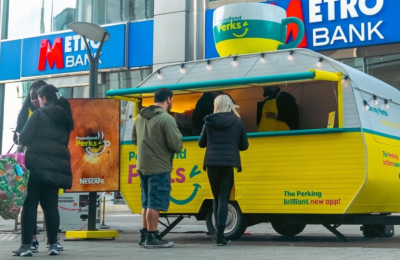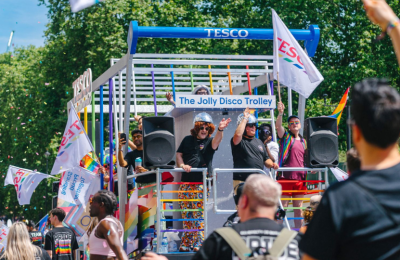Jonathan Simpson, global expert in commercial sales & shopper marketing at OxfordSM, considers whether we still need shopper marketing.
(This article originally appears on the ‘Business Not As Usual’ event website at https://bnau2018.oxfordsm.com)
As a passionate shopper marketer, the question ‘is shopper marketing dead’ may seem odd (unless I’m trying to put myself out of a job). After all, I’ve specialised in shopper marketing for over 8 years whilst client-side, have spoken at conferences about the need for shopper marketing, and now work with clients all over the world to help them develop their shopper marketing strategy and capability. So, why then, am I asking?
First, some context; at OxfordSM many of our clients ask us to help “embed shopper in our business”, or to “make the case for shopper marketing”, which are, of course, entirely valid requests. Many organisations have historically either been consumer marketing or sales led, with shopper marketing the vehicle through which to sell in what these teams needed to happen in store. Therefore, any attempt to redress this balance, and bring shopper marketing into the planning process in a more strategic way would be a significant step forward from where they are now.
However, will it be enough of a step forward? As I work with more and more businesses, and as brands move increasingly to being more purpose-driven, I’m starting to wonder whether we still need shopper marketing, or whether the existence of shopper marketing is actually part of the problem?
Experience-driven growth
We’ve seen and helped many leading service businesses adopt experience-led marketing as the core of their approach, resulting in disproportionate sales growth. CPG businesses are increasingly starting to see the benefits of this approach, but it’s not something that can be done with the existing structures and siloed ways of working; it requires a fundamental change in how an organisation goes to market.
What is experience-led marketing?
But what do we mean by experience-led marketing? By truly seeing the full experiences of our consumers, shoppers, and other stakeholders, we can understand how to use each relevant touchpoint along the whole journey. We can then create joined up experiences that move people along the journey more effectively because the brand, or service, speaks to them in relevant ways and times in the right places. But who are we targeting – consumers, or shoppers? Well the answer here has to be “people”. By thinking across the whole journey, companies are able to see where the issues and opportunities are, irrespective of which stakeholder we are talking about, really invest in those, and work to join up the entire journey…
Don’t just do what you’ve always done
For example, in 2016 Domino’s Pizza were in decline, so initially planned to do what they always had to drive sales… more TV ads. However, by looking across the whole experience journey, they were able to identify that the issues were the pizza (so they improved the recipe) and the act of ordering the pizza, so they developed “push for pizza” where people were able to order from their phone via the Domino’s app with one push of a button. Domino’s now have more than $2billion of sales from online each year, showing that focusing on the experience, rather than ‘doing what you’ve always done’ really works.
A seamless experience journey matters
So, if we’re really trying to market along the whole experience journey, thinking of “consumers” and “shoppers”, and by extension the “consumer journey” or the “shopper journey” no longer works. Disjointed working practices will lead to a disjointed experience journey, and it’s a seamless journey that makes a difference with people. And what does that mean for structures and ways of working?
Stage and gate processes no longer work
Often these days, CPG innovation and activation are developed according to a typical “stage and gate” process, where teams do their bit, and then pass it on to the next team in the chain, in exactly the same way Henry Ford built the Model T all those years ago. And like the Model T did, this approach will get results, but will deliver a formulaic experience, rather than one that stands out in any way.
If we truly want to deliver a seamless experience, we have to develop it seamlessly too. This means teams composed of the people relevant to delivering that experience. Not brand teams handing off to shopper teams handing off to sales teams, but brand, sales, and shopper people all working together on the experience, at the same time, in the same room, with the same goals. No silos, no “well I did my job”, no finger pointing – just one team, all orientated around the journey, each bringing their special set of skills to the team, to deliver one goal.
Fluid teams are the future
It also requires much more agility in ways of working. Experience journeys can change quickly, so the old processes need to be significantly accelerated, with fast iterative cycles of test and learn replacing hours of consumer and shopper testing, delivering seamless experiences in real time, not 6 months later. Team members will change too – for some journeys every function will be needed, but for others it will only be some functions or skills – and this is quite a change to the set teams we have now. Budgets will need to be more fluid, and pointed towards where they’re needed, rather than where money has always been allocated.
We then need to break out of our old routine. Domino’s were going to do what they always had done, but by examining the journey, they changed their approach. The same will need to happen in all businesses, and amongst their teams, so that we do what needs doing to deliver that great experience, rather than doing what we’ve always done. This will no doubt be uncomfortable at first, but eventually will surely be more interesting, rewarding, and successful than simply producing yet another case stacker or digital coupon.
So, is shopper marketing dead?
As a department, maybe. But if it is, the same can be said for brand marketing and pure sales… These old silos, where brand dealt with “above the line” and shopper with “below the line” look outdated now, and will actually lead to exactly the kind of disjointed experience that make people leave brands.
However, there is still a need for people who really understand how people shop, where they shop, and how behaviour might be changed, just like there is still a need for people who understand how and when people consume media, and what messages appeal to them.
We still need to understand shoppers
In most cases, our retail partners will play a key role in the experience journey – our brands will be viewed and bought (or not) on their websites or in their stores, and so we have to ensure that what we are developing works for them and their shoppers, and this is where the skills and discipline of shopper marketing will still be needed. We will still need to uncover those great shopping insights, and develop the platforms that will help turn those insights into opportunities to change shopper behaviour and deliver growth. We’ll still need to understand our retailer’s categories, and how we might help to grow them. And flawless execution becomes even more important than it ever was, plus we’ll need to understand where our execution gaps are, and how to plug them in real time.
Shopper marketers will need to up their game, to understand the role they play in the whole experience journey rather than being experts in the shopper journey. We will have to adapt as the world changes; what does voice mean for shopping? What does the Internet of Things mean for shopping? If a fridge orders beer itself, how do we influence that behaviour? For years the first goal of shopper marketing was to get on the list, but what if there’s no list?
So no, shopper marketing isn’t dead
This isn’t a eulogy for shopper marketing. I’m just as passionate about it as I ever was, and I still believe in it as much as I ever did. It does need to change to play a part in delivering a great experience journey to people, but it’s not only shopper that needs to change. Businesses need to understand where they are now, and where they want to get to, and quickly, but in all that change, there’ll still be a need for people who understand shoppers.
This, and more like it will be discussed at our “Business Not As Usual” event in Amsterdam on 27th September, where we’re bringing together leaders from across the globe to talk about the issues they’re facing.























